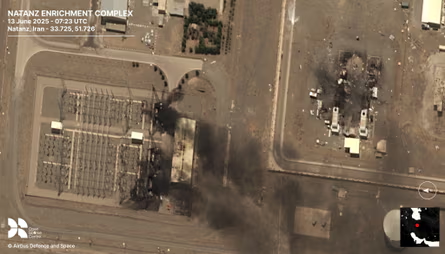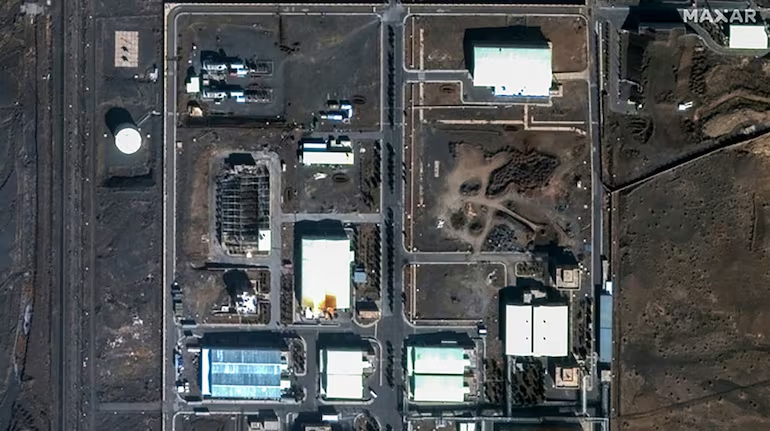In a striking development in the ongoing Israel-Iran conflict, the International Atomic Energy Agency (IAEA) has confirmed that Israeli precision strikes directly hit the underground uranium enrichment halls at Iran’s highly fortified Natanz nuclear complex.
This revelation marks a significant shift in what many believed to be an impenetrable site, located deep beneath the earth’s surface in central Iran.
Previously thought to be beyond the reach of conventional attacks, the Natanz facility — one of Iran’s most secretive and secure nuclear sites — sustained damage during Friday’s Israeli air assault.

According to a statement posted by the IAEA on the social platform X, continued analysis of high-resolution satellite imagery “has identified additional elements that indicate direct impacts on the underground enrichment halls at Natanz.”
The IAEA also noted that there has been “no change to report” at Iran’s other major nuclear installations — Fordow and Isfahan.
READ ALSO: U.S. Reinforces Air Power in the Middle East Amid Escalating Israel-Iran Conflict
However, it acknowledged that on-ground inspection remains impossible at this time due to the volatile security situation. For now, assessments rely heavily on satellite data and feedback from sources close to the affected areas.

This is not the first blow to the Natanz facility. A previous strike had already destroyed its above-ground enrichment infrastructure. IAEA Director General Rafael Grossi reported that Friday’s attack most likely compromised key underground centrifuges by damaging the power supply — a critical component for enriching uranium.
READ ALSO: VIDEO: Massive Fire Erupts on Cargo Vessel in Strategic Strait of Hormuz
While Natanz appears to have been directly hit, the Fordow facility — hidden deep within a mountain — remains untouched. Fordow has been enriching uranium to over 60%, alarmingly close to weapons-grade levels.

Due to its fortified location, Fordow is considered virtually immune to conventional airstrikes, with only the U.S. military’s 14,000 kg “bunker buster” bomb, deliverable by a B-2 bomber, capable of penetrating it.
This escalation heightens global concerns around nuclear safety, regional stability, and the potential for broader conflict. The IAEA continues to monitor the situation closely, underscoring the urgent need for diplomatic efforts amid deepening hostilities.
Be the first to know. Tap to join us on Telegram.
Discover more from Scoop Hub
Subscribe to get the latest posts sent to your email.

